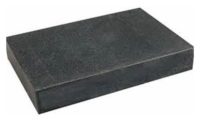Ask the Experts
Interpreting Appraiser Variation and %GR&R Discrepancy

Question:
I was assigned in our metallurgical lab to perform a Variable GR&R for our tensile machine to meet requirements for our PPAP submittal. Since our 60 min yield strength product was supplied to this customer it was selected for sampling. Ninety samples were selected ensuring they were selected randomly. This number of samples were required since a tensile test is a destructive test. Our three lab technicians which normally operate this equipment were used to perform the analysis. The results of the analysis surprised me, and I have checked and rechecked the analysis. Two different programs were used to assess if one of the programs may have been corrupted. The following results were obtained: Appraiser Variation 0.0% while the %GR&R was 89.57. Could you provide me with some assistance in the interpretation or what my next steps should be?
Answer by John Vandenbemden:
It appears that you used a crossed gage R&R study. A crossed gage R&R study is used to evaluate the repeatability and reproducibility of a measurement system used to measure a continuous variable. A crossed gage R&R study when multiple operators can measure all parts used in the study multiple times. This is not the situation for your study since each operator is not able to measure each of the parts. The test most appropriate is the nest gage R&R Study. A nested gage R&R study is used when parts cannot be measured multiple times by multiple appraisers, for example, destructive testing in which the homogeneous batch size is too small to accommodate multiple tests by multiple operators.
Another sign of an issue is the NDC. The NDC tells you how many categories your measurement system (MS) can differentiate considering your process variation. Automotive industries recommend a value equal or greater than five.
Have a question? Need help with a shop-floor scenario you have encountered? Just ask. Send your questions to selandd@bnpmedia.com with the subject Ask the Expert!
Looking for a reprint of this article?
From high-res PDFs to custom plaques, order your copy today!








